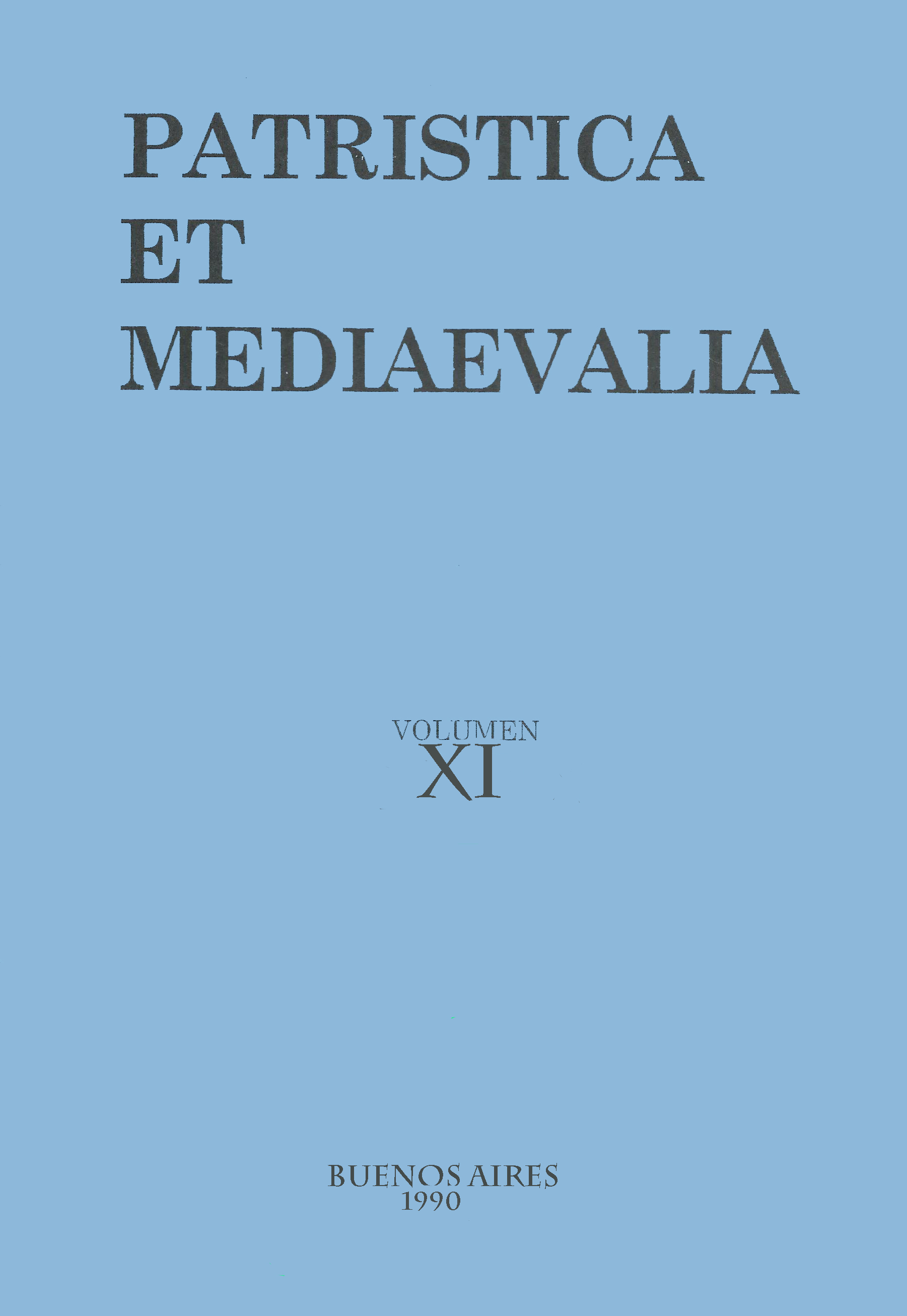Comments on some Eriugena’s poems
Abstract
The poems discussed in this last part of the article are perhaps Erugena’s most famous. They are related to each other by their subject matter, and depend in part on the same sources. ‘Si vis OYPANIAC’ is dedicated to the incarnation of the Word, and may have been written for the liturgical feast of the Annunciation (March 25). This theological theme is introduced by cosmological –where the influence of Martianus Capella has been pointed out– and metaphysical considerations. The latter poems are based on pseudo-Denys, but, like other Eriugenian texts, combine ideas on being and causality of God taken from the Areopagite with those of another Christian Neoplatonist, Marius Victorinus, whose book I B Adversus Arium (chapters 48-64) also provides elements for the conception of the flesh of Christ as a way of access to the “hidden and veiled” divinity of the second half of the carmen. Another source for this section is a little-known opuscule, which the manuscript tradition joined to the exegetical works of Marius Victorinus, the Liber de physicis. The poem IX Traube, ‘Aulae sidereae’, has been the object of much research in recent years, especially with regard to its probable references to the church built by Charles the Bald in his palace in Compiègne. Here this question is discussed on the basis of a little-noticed architectural description of De praedestinatione, and with the help of a recent study by M. Herren, in which, among other things, the links of the poem IX with the Christmas festival are emphasized. The birth of Christ is in fact the central theme, according to which those of the equinoxes and solstices appear –there Eriugena comes close to a piece from the poem called Celtic Catecheses–, and the meaning of the numbers four and eight, influenced by Victorin de Pettau's De fabrica mundi. The Commentary on the Apocalypse by the same author could explain the controversial expression 'centeno normate' (v. 87), and would have inspired some verses of the Codex aureus. Finally, the De physics, mentioned above, also seems to be at the origin of many of the motifs of carmen IX. In the final pages of this paper, two subjects are briefly considered: the connection of Eriugena to the Irish branch of Medieval Latin literature, and his implicit opposition to a heterodox Christological doctrine of the end of the eighth century, the Spanish adoptianism.Downloads
1. The authors who publish in this magazine accept the following conditions:
-
They retain the copyright and grant to the magazine the right of the first publication, with the work registered under the Attribution-ShareAlike 4.0 International License that allows third parties to use what is published as long as they mention the authorship of the work and the first publication in this magazine.
-
They can make other independent and additional contractual agreements for the non-exclusive distribution of the version of the article published in this magazine (eg. include it in an institutional repository or publish it in a book) provided that they clearly indicate that the work was first published in this journal.
-
They are allowed and recommended to publish their work on the Internet (for example on institutional or personal pages).
2. AutoArchive Conditions. Authors are allowed and encouraged to distribute post-print electronic versions of their manuscripts because it promotes their circulation, a possible increase of quotation and a major reach among the Academic community. Color RoMEO: blue.













